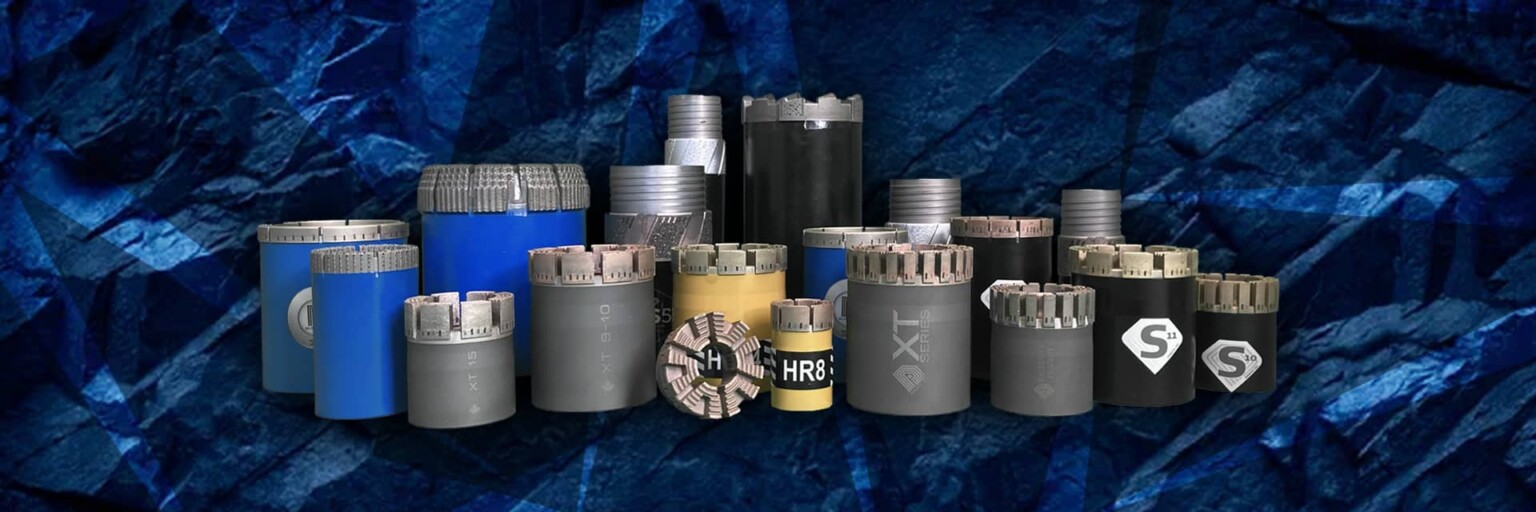
The characteristics of the formation to be drilled is a key factor in the selection of the appropriate type of bit to use for your project. These characteristics include not only the rock type and its degree of consolidation, but also measurable characteristics such as Mohs hardness and uniaxial compressive strength (UCS).
Dimatec offers core bits with different cutting media for use in all formations ranging from hard, consolidated and non-abrasive (diamond impregnated type) to soft, fractured and abrasive (PDC-set type). The diamond impregnated type is fine-cutting with its large number of cutting elements with their small degree of exposure. Progressing through the different forms of available cutting media, the number of cutting elements is significantly reduced and their degree of exposure is increased up to the coarse-cutting PDC-set type.
To assist in tool selection, click here to view the Dimatec general application chart (by cutting media type) for mineral exploration bits in PDF format.
Dimatec’s system for diamond impregnated matrix identification provides a simple means of determining the correct matrix type to use for your job. The various matrix types are identified as code numbers such as S6 or XT10. The alpha component designates the matrix series while the numeric component designates the relative hardness of the bit’s matrix. In general, a diamond impregnated bit with a low identifying number such as S3 would be used to drill a soft, fractured and abrasive formation. As the numbers increase, the matrices are intended for use in increasingly harder formations up to the highest number, XT15, which would be used to drill an ultra hard, highly consolidated, non-abrasive formation.
When selecting a matrix type, consideration should be given to the capabilities of the drilling equipment in terms of its ability to function within Dimatec’s recommended operating parameters. It may be necessary to select a harder or softer matrix type than what is recommended in the Dimatec matrix selection chart in order to address drilling equipment limitations. Consideration should also be given to variations in geological conditions that may require the use of more than one matrix type on a particular job site.